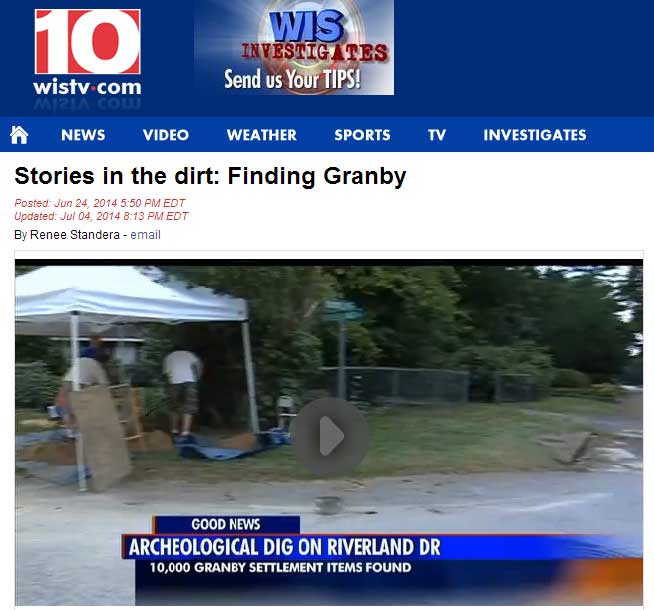HistorySoft in the news:

CAYCE, SC (WIS) -
People
using the Riverwalk in Cayce may notice people digging under a tent on
Riverland Drive near the police substation at the end of the path.
They are looking for what's left of a lost community known as Granby dating back nearly 200 years.
"We're
hoping to find scientific proof that this is Granby," Project Manager
David Brinkman said. "We're pretty sure the location. Historians over
the years thought this was the area but nobody could say for sure."
After
two years of digging 65 pits along the street, Brinkman and his team of
volunteers and amateur archaeologists and historians have found about
10,000 artifacts dating to the period of the Granby settlement.
"Granby
itself was the first developed town in the area," he said. "That's our
main goal is to bring back this forgotten history which is very
important to the area."
"This is the head of navigation,"
project historian Dean Hunt said. "So this was as far as a boat could
get from the coast, so it's a natural place to stop."
The
community sat at the junction of an Indian trail, the old State Road,
and Friday's Ferry, a major crossing of the Congaree River.
"History happened here," Hunt said.
"In
the three miles around us you have colonial forts, a colonial town,
Saxe Gotha colonial town, trade development from different areas," he
said. "Even had a civil war battle here."
Brinkman is digging for Granby in his own yard.
"A
local surveyor had found what was believed to be remnants of Friday's
Ferry and I'd been researching Friday's Ferry on another project, so I
got excited," he said. "My wife and I came out here and here was this
foreclosed property just maybe 400 feet from this very site."
"It's
a big responsibility because people are like, every question that they
ask, 'Where are you gonna' put all this stuff?' Because we have tens of
thousands of stuff from ceramics to glass to pottery," said Brinkman's
wife, Odess.
Brinkman and the team have been posting their
discoveries on the Finding Granby web site. At first he reached
out to researchers and academic archaeologists, who didn't have time or
money for the project. Brinkman's team and the volunteers have been
doing all the work.
"We can dig down one, two, three feet and
recover these relics that date back to the time period that this area
was occupied is fascinating to me," archaeologist D.C. Locke said. He's
been working on the dig for two years.
The community consisted of about 200 homes. Fragments of window glass and European china suggest some residents were wealthy.
"I
think about then vs. now and how much more difficult it might have been
for their lives and lifestyles," Locke said. "They were hardy, tough
people."
If you are considering digging holes in the
neighborhood to find your own artifacts, don't bother. Brinkman said
the relics they found are common, mundane or in pieces.
Copyright 2014 WIS. All rights reserved.
The picture below is Dean being interviewed by Renee Standera.


